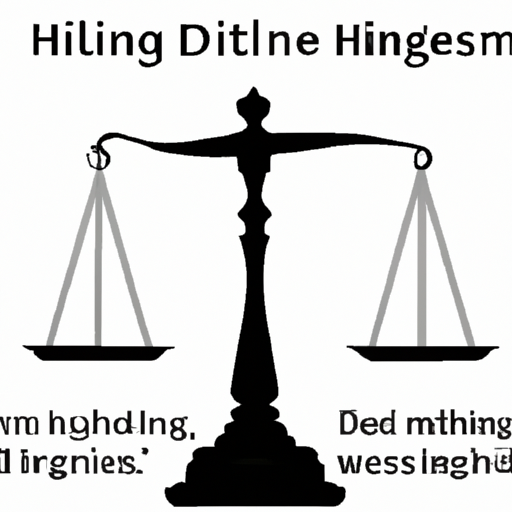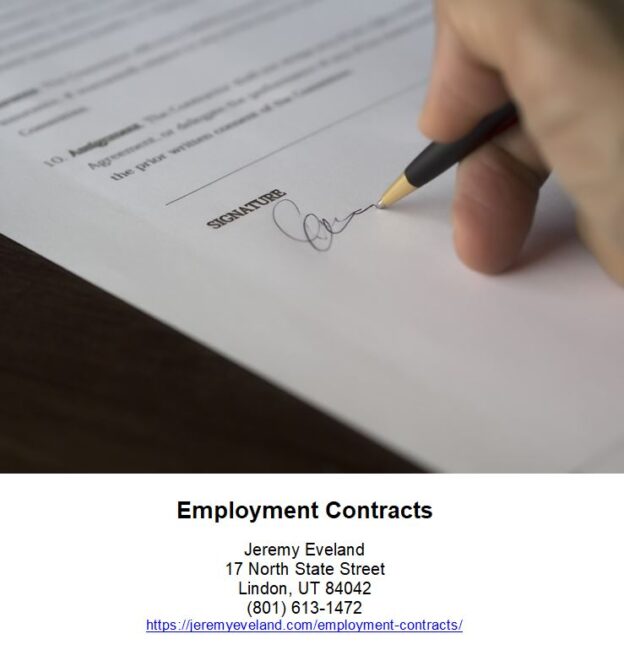In an ever-evolving legal landscape, it becomes increasingly important for businesses to remain informed and compliant with the latest legislation impacting their operations. With this in mind, the article at hand sheds light on the relevance and implications of paid sick leave laws. By understanding these laws, businesses can ensure that they maintain a fair and equitable work environment, minimize legal risks, and prioritize the well-being of their employees. Through a comprehensive exploration of the topic, this article aims to equip business owners and executives with the knowledge necessary to navigate these laws effectively. To further assist readers, we have also included some frequently asked questions along with concise answers to address any immediate concerns. Keep reading to strengthen your understanding of paid sick leave laws and take the necessary steps to safeguard your business and its workforce.

Overview of Paid Sick Leave Laws
Paid sick leave laws refer to legislation that requires employers to provide a certain amount of paid time off to their employees for illness-related reasons. These laws aim to protect workers’ health and well-being, reduce the spread of contagious diseases, and ensure fair treatment for employees who need time off due to illness.
What are Paid Sick Leave Laws?
Paid sick leave laws are legal mandates that require employers to provide paid time off to their employees for illness-related reasons. This time off can be used by employees to recover from their own illnesses, seek medical attention, care for a sick family member, or deal with specific public health emergencies. The laws typically outline the minimum amount of sick leave that employers must provide, eligibility requirements, and other provisions to protect employees’ rights.
Purpose of Paid Sick Leave Laws
The purpose of paid sick leave laws is to promote public health, protect employees’ well-being, and reduce the spread of contagious diseases. By ensuring that employees can take time off when they are ill or need to care for a sick family member, paid sick leave laws help prevent sick workers from coming to work and potentially infecting others. These laws also aim to address the financial burden and workplace pressures that employees may face when they are sick and unable to work.
Coverage of Paid Sick Leave Laws
Paid sick leave laws typically apply to employers of a certain size and within specific jurisdictions. The coverage may vary at the federal, state, and municipal levels, with different laws governing the rights and obligations of employers in each jurisdiction. It is essential for employers to understand and comply with the applicable laws to avoid potential legal consequences.
Key Provisions of Paid Sick Leave Laws
Paid sick leave laws often include key provisions that employers must adhere to. These provisions may include the minimum accrual rate of sick leave, the maximum number of sick leave days that employees can accrue, eligibility requirements, carryover and payout policies, and notice and documentation requirements. Employers should familiarize themselves with these key provisions to ensure compliance with the law.
Benefits of Paid Sick Leave Laws for Employers
While paid sick leave laws primarily focus on protecting employees, they also offer several benefits for employers. Understanding these benefits can help employers recognize the value of implementing paid sick leave policies in their organizations.
Improved Employee Productivity
Providing paid sick leave can contribute to improved employee productivity in the long run. When employees have the opportunity to take time off to recover from illness, they can return to work healthier and more focused. This reduces the likelihood of employees working while sick, which can lead to decreased productivity, increased errors, and longer recovery times. By prioritizing employee health and well-being, employers can create a more productive work environment.
Reduced Employee Turnover
Paid sick leave policies can also help reduce employee turnover. When employees are given the flexibility to take time off when they are sick, they are more likely to feel valued and supported by their employer. This, in turn, can foster employee loyalty and job satisfaction, leading to higher retention rates. By implementing paid sick leave policies, employers can demonstrate their commitment to their employees’ well-being and loyalty, which can positively impact the overall workplace culture.
Compliance with Legal Requirements
Complying with paid sick leave laws is not only ethical but also necessary for legal compliance. Failure to provide the required amount of paid sick leave could result in legal consequences, including fines, penalties, and potential litigation. By implementing and adhering to paid sick leave laws, employers can ensure compliance with the law and avoid potential legal risks.
Enhanced Employee Satisfaction
Paid sick leave policies contribute to enhanced employee satisfaction. When employees know that they can take time off when they are ill without worrying about lost wages, they feel supported and respected by their employers. This can lead to increased job satisfaction, motivation, and overall morale in the workplace. Employees who feel valued and supported are more likely to be productive, engaged, and loyal to their employers.
Challenges and Considerations for Employers
While paid sick leave laws offer numerous benefits, employers must also navigate certain challenges and considerations when implementing and managing these policies.
Tracking and Documentation
One of the challenges employers may face is tracking and documenting employees’ use of sick leave. It is crucial to have a system in place that accurately records and monitors employees’ sick leave balances, accrual rates, and usage. Additionally, employers may need to collect and retain documentation from employees, such as medical certificates or other proof of illness, to ensure compliance with the law and prevent abuse.
Potential Abuse and Fraud
Paid sick leave policies may be susceptible to abuse and fraud, and employers need to establish measures to prevent misuse. This can involve setting clear guidelines and requirements for using sick leave, implementing a robust reporting and verification process, and addressing any potential concerns or suspicions of abuse promptly. Balancing employees’ rights with the need to prevent abuse is essential for creating a fair and compliant work environment.
Impact on Small Businesses
Paid sick leave laws can have a unique impact on small businesses, as they may face additional challenges due to limited resources and staffing. Small businesses may struggle to provide paid sick leave without causing significant disruption to their operations or incurring additional costs. Employers should carefully evaluate the potential impact on their business and explore available resources and support programs to help mitigate the challenges associated with implementing paid sick leave policies.
Legal Compliance Risks
Non-compliance with paid sick leave laws can expose employers to legal risks and consequences. Federal, state, and municipal agencies responsible for enforcing these laws may conduct investigations, audits, and inspections to ensure employers are complying with the requirements. Employers who fail to comply may face fines, penalties, and potential lawsuits. It is crucial for employers to stay informed about the specific legal obligations in their jurisdiction and take proactive steps to ensure compliance.
Paid Sick Leave Requirements by Jurisdiction
Paid sick leave laws can vary depending on the jurisdiction in which an employer operates. Employers need to be aware of the specific requirements set forth by federal, state, and municipal laws to ensure compliance.
Federal Paid Sick Leave Laws
At the federal level, the Family and Medical Leave Act (FMLA) provides eligible employees with up to 12 weeks of unpaid leave for certain medical and family-related reasons. Employers covered by the FMLA must provide eligible employees with job-protected leave, although it may not necessarily be paid.
State-Level Paid Sick Leave Laws
Many states have enacted their own paid sick leave laws, which may vary in terms of coverage, accrual rates, maximum leave days, and eligibility requirements. Some states, such as California, New York, and Washington, have robust paid sick leave laws that provide more generous benefits to employees. Employers should familiarize themselves with the specific laws in their state to ensure compliance.
Municipal Paid Sick Leave Laws
In addition to federal and state laws, certain cities and municipalities may have their own paid sick leave ordinances. These local laws may apply to employers even if their state does not have a specific paid sick leave requirement. City-specific paid sick leave laws often have unique provisions and regulations that employers must follow. It is essential for employers to be aware of any municipal laws that apply to their organization.

Navigating Paid Sick Leave Laws as an Employer
To effectively navigate paid sick leave laws, employers need to establish clear policies, communicate them effectively, and ensure proper record-keeping and documentation.
Developing a Paid Sick Leave Policy
Developing a comprehensive paid sick leave policy is crucial for employers to ensure compliance with the law and provide clarity to employees. The policy should outline the eligible reasons for taking sick leave, the process for requesting leave, the accrual rates, any usage limitations, and the documentation requirements. Employers should consult with legal professionals specialized in employment law to develop a policy that meets the legal requirements of their jurisdiction.
Communicating and Implementing the Policy
After developing a paid sick leave policy, employers need to effectively communicate and implement it within their organization. Clear communication is essential to ensure employees understand their rights, responsibilities, and the procedures for requesting and using sick leave. Employers should provide written policies, hold training sessions, and address any employee concerns or questions promptly.
Record-Keeping and Documentation
Employers must establish proper record-keeping and documentation processes to comply with paid sick leave laws. This includes accurately tracking employees’ sick leave balances and usage, retaining any required documentation, and maintaining records of communication and approvals related to sick leave requests. Employers should establish a system that can efficiently manage and protect these records to ensure compliance and facilitate any necessary auditing or reporting.
Training Managers and Supervisors
Training managers and supervisors on the requirements and provisions of paid sick leave laws is crucial for ensuring consistent implementation and compliance throughout the organization. Managers and supervisors should understand their role in enforcing the policy, addressing employee requests, and handling any potential issues or concerns related to sick leave. By providing proper training, employers can promote a culture of compliance and fair treatment.
Enforcement of Paid Sick Leave Laws
Enforcement of paid sick leave laws is primarily the responsibility of government agencies at the federal, state, and municipal levels. These agencies are tasked with ensuring employers comply with the law and holding them accountable for any violations.
Government Agencies Responsible for Enforcement
The specific government agencies responsible for enforcing paid sick leave laws may vary depending on the jurisdiction. At the federal level, the Department of Labor’s Wage and Hour Division (WHD) is responsible for enforcing the FMLA and other federal labor laws. State and municipal agencies may have their own labor departments or divisions responsible for enforcing paid sick leave laws within their jurisdiction. Employers should familiarize themselves with the relevant agencies in their jurisdiction to understand their enforcement authority.
Investigation and Audit Procedures
Government agencies may initiate investigations or audits to ensure employers’ compliance with paid sick leave laws. This can involve inspecting records, interviewing employees, and conducting on-site visits. Employers should be prepared to cooperate with these investigations and provide any requested documentation or information promptly and accurately. Having well-organized records and documentation can streamline the process and demonstrate compliance.
Penalties and Fines for Non-Compliance
Non-compliance with paid sick leave laws can result in penalties, fines, and legal consequences for employers. The specific penalties and fines may vary depending on the jurisdiction and severity of the violation. Employers who fail to comply with the law may be required to pay back wages to affected employees, face fines imposed by government agencies, and potentially face civil litigation from employees. It is crucial for employers to take compliance seriously to avoid these potential liabilities.
Recent Updates and Changes to Paid Sick Leave Laws
Paid sick leave laws have undergone significant changes and updates in recent years, driven by various factors such as public health emergencies and legislative initiatives. Staying informed about these updates is crucial for employers to ensure compliance and adapt to evolving legal requirements.
Impact of COVID-19 on Paid Sick Leave Laws
The COVID-19 pandemic has had a profound impact on paid sick leave laws globally. Many jurisdictions have implemented temporary emergency measures to address the specific challenges and risks associated with the pandemic. These measures have included expanded sick leave entitlements, additional paid leave for quarantine or isolation purposes, and specific provisions for COVID-19-related absences. Employers should closely monitor guidance from health authorities and regulatory agencies to stay informed about the latest updates and requirements related to COVID-19 and paid sick leave.
Proposed Legislative Changes
Legislators continue to introduce and propose changes to paid sick leave laws, aiming to expand coverage, increase benefits, and address emerging workplace issues. These proposed changes may vary across jurisdictions and can include adjustments to accrual rates, expansion of eligibility requirements, and the inclusion of new qualifying reasons for paid sick leave. Employers should keep track of proposed legislative changes in their jurisdiction and be prepared to adapt their policies to comply with any new or amended laws.
Court Decisions and Precedents
Court decisions and precedents related to paid sick leave laws can also impact employers’ obligations and compliance requirements. Interpretations of existing laws by courts may influence how employers are expected to implement and administer their paid sick leave policies. Employers should monitor relevant court decisions to understand any potential implications on their organization and seek legal advice if needed.
Benefits of Consulting a Lawyer for Paid Sick Leave Laws
Navigating the complex landscape of paid sick leave laws can be challenging for employers. Consulting a lawyer who specializes in employment law and has expertise in paid sick leave can provide numerous benefits and help ensure compliance with the law.
Expert Guidance on Compliance
Employment lawyers can provide expert guidance on complying with paid sick leave laws specific to the employer’s jurisdiction. They can assist employers in understanding their obligations, developing compliant policies, and implementing necessary procedures. Lawyers can also help employers stay updated on any changes or updates to the law, ensuring ongoing compliance.
Customized Policy Development
Lawyers can assist employers in developing customized paid sick leave policies that align with the legal requirements and the organization’s specific needs. They can review existing policies, identify any gaps or areas for improvement, and draft comprehensive policies that provide clarity and protection for both employers and employees. Customized policies help ensure compliance while considering the unique circumstances and challenges faced by the employer.
Representation in Legal Proceedings
In the event of legal disputes or enforcement actions related to paid sick leave laws, having a lawyer by your side can provide invaluable representation and support. Employment lawyers can advocate for employers’ interests, handle negotiations, and provide strategic counsel throughout the legal proceedings. Their expertise can help employers navigate complex legal processes and protect their rights and interests.

FAQs about Paid Sick Leave Laws
What is the minimum number of sick leave days required by law?
The minimum number of sick leave days required by law varies depending on the jurisdiction. While federal laws such as the FMLA provide unpaid leave, specific paid sick leave laws at the state and municipal levels dictate the minimum requirements. Employers should consult the laws applicable to their jurisdiction to determine the minimum number of sick leave days they must provide.
Can employers require medical documentation for sick leave?
In many jurisdictions, employers can require employees to provide medical documentation for sick leave. However, the requirements and restrictions around medical documentation can vary. Employers should refer to the paid sick leave laws in their jurisdiction and ensure their documentation requirements comply with the law while respecting employees’ privacy and confidentiality.
Are part-time employees eligible for paid sick leave?
In many jurisdictions, part-time employees are eligible for paid sick leave. However, eligibility requirements and the amount of leave may differ from full-time employees. Employers should review the paid sick leave laws in their jurisdiction to ensure compliance with the specific requirements for part-time employees.
Can employees use sick leave for family care purposes?
Many paid sick leave laws allow employees to use sick leave to care for family members who are ill or need medical attention. The specific definitions of family members and the extent of care may vary depending on the jurisdiction. Employers should become familiar with the family care provisions outlined in the paid sick leave laws applicable to their organization.
What are the consequences for non-compliance with paid sick leave laws?
The consequences for non-compliance with paid sick leave laws can vary depending on the jurisdiction and severity of the violation. Employers who fail to comply may be subject to fines, penalties, and potential legal action by affected employees. Additionally, non-compliance can damage an organization’s reputation and lead to a decline in employee morale and productivity. It is crucial for employers to prioritize compliance to avoid these consequences and uphold a fair and supportive work environment.










